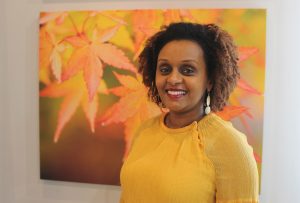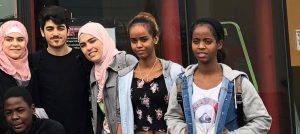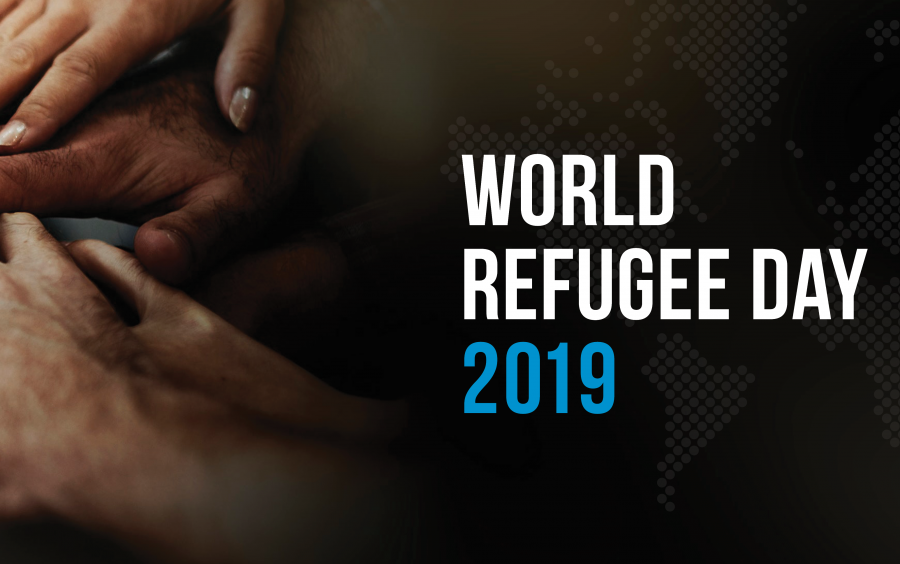There has been a long history of civil war and conflict between the two African countries of Eritrea and Ethiopia. Imagine what growing up in such a wartorn region might be like — and then having to flee it for safety. World Refugee Day, June 20, is a chance to pause and reflect on the refugee experience, and the strength and resilience of millions of refugees worldwide.
Meryam Ahmed Mohamed, a young refugee in Canada who came to DIVERSEcity Community Resources Society for settlement support last year, knows this experience firsthand. She was born in Eritrea and, as a young girl, was raised knowing that she and her two siblings would eventually be forced to join the military. This scary reality was no doubt why her parents made the decision to leave everything they knew behind to find — hopefully — a better future for them all.
“My parents went to Ethiopia as refugees, thinking to eventually get to a better country,” Meryam says. “But to leave our country was really hard. We left family and friends, and I don’t know …” she breaks off.
She seems hesitant to share more of her memories. Perhaps it’s too painful. Or too personal. It can’t be easy to talk about such loss — of being suddenly without a home, missing your loved ones and facing uncertainty about the future.
Number of refugees growing globally
Sadly, the number of people experiencing such displacement is rising worldwide, according to the United Nations Refugee Agency (UNHCR) report released on June 19.
Meheret Bisrat, manager, refugee & specialized programs, at DIVERSEcity, shares, “The report highlights a new record of 70.8 million people who are forcibly displaced worldwide. Of those, 41.3 million are internally displaced (within their own countries), 25.9 million are refugees, and 3.5 million are asylum seekers (people seeking international protection). This is an increase of 2.3 million from last year.”
In 2018, Canada resettled the highest number of refugees (28,100) in the world last year, according to the UNHCR report.

Resettling in Canada as a refugee
Speaking further with Meryam, the young refugee shares that she was glad when her family learned they were coming to Canada as government-sponsored refugees, but this next step in their journey wasn’t always easy.
They landed on September 26, 2017. She was just 18 years old at the time and now faced a whole new set of challenges, from learning a new language to adapting to the culture. “Everything was new to us,” says Meryam, who registered in high school in Surrey, BC. “The weather, the people, the language!”
Joining the RISE Youth program at DIVERSEcity
Then a friend told her about DIVERSEcity’s Refugee & Immigrant Specialized Experience (RISE) program, which supports new refugees and immigrants, both adults and youth, with personalized services and case management in their first language as they settle in to their new community.
“My friend told me it could help me get out from all the stress I was in,” says Meryam, who now recommends the RISE program to other new refugees. “It’s hard to be in a new country,” she adds. “RISE helps us meet new people, and learn new things, even something like [taking public] transportation.”
Meryam says it’s been a challenging journey to Canada, but “I’m happy here now.”
In closing, DIVERSEcity’s Meheret Bisrat adds: “We, at DIVERSEcity, honour the courage and determination of those forced to leave everything they know, to seek safety from prosecution. Through the work of many of our departments, we strive to create a vision of dignity, justice and empowerment so that refugees are able to thrive and make meaningful contributions to our communities.”

Want to help refugees in the Lower Mainland?
Our DIVERSEcity Refugee Support Fund was created to help support refugees’ transition into the Lower Mainland for basic necessities that government funding does not cover. Want to help? Learn more about the fund and how to donate here.

